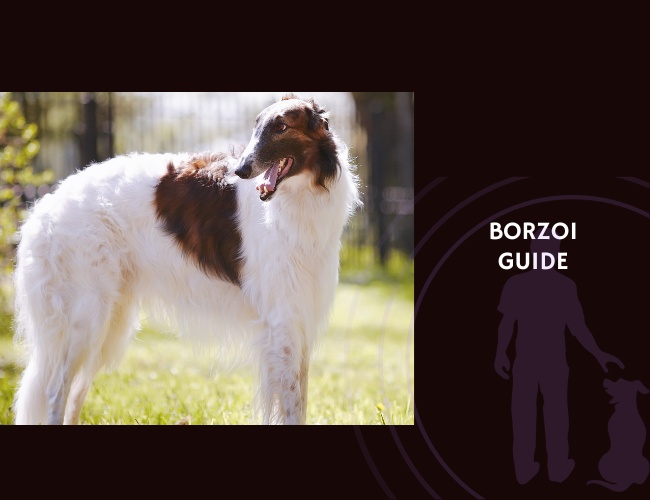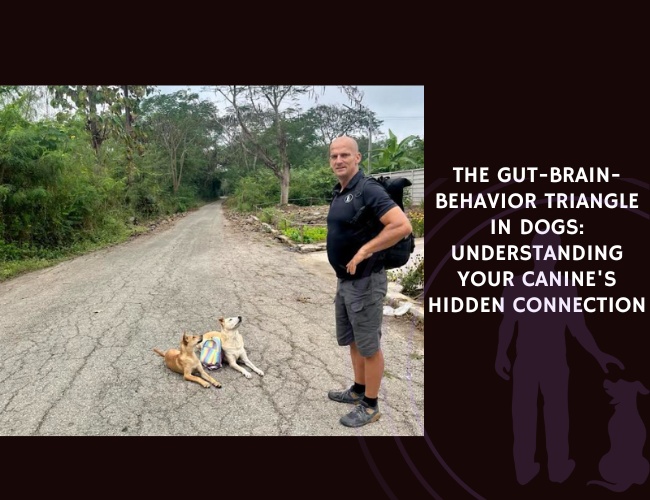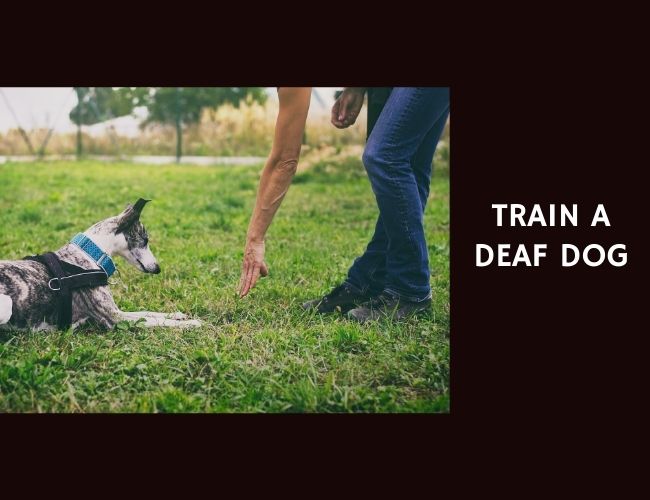Introduction
Picture a dog that embodies the elegance of Russian aristocracy, the speed of the wind across endless steppes, and the gentle soul of a devoted companion – this is the Borzoi, a breed that seems to have stepped directly from the pages of a Tolstoy novel into our modern world. Once known as the Russian Wolfhound until 1936, these magnificent sighthounds carry centuries of selective breeding in their graceful silhouette and aristocratic bearing. Their journey from the grand estates of Imperial Russia, where they hunted wolves in elaborate ceremonies alongside nobility, to today’s family homes represents one of the most fascinating transformations in canine history.
You might notice immediately that the Borzoi carries themselves differently from other dogs – there’s a quiet dignity in their movement, a reserved grace that speaks to their noble heritage. Yet beneath this regal exterior lies a surprisingly playful spirit, earning them the affectionate description of “aristocrats hiding a bit of court jester.” Let us guide you through understanding these remarkable dogs, from their complex temperament shaped by centuries of independent hunting to their unique care requirements that reflect both their athletic heritage and their surprisingly calm household demeanor 🐾
Character & Behaviour
Understanding Your Borzoi’s Noble Heritage
The Borzoi’s character cannot be fully appreciated without understanding their remarkable history. Developed in 16th century Russia through careful crosses between Saluki, Arabian Greyhounds, and thick-coated Russian breeds, these dogs were bred specifically for coursing large game across the vast Russian steppes. At the height of their glory, estates like the famous Perchino maintained incredible numbers – Grand Duke Nicholas Nicolaievich kept 130 adult Borzoi plus 60 puppies, all organized into eight color-based kennels.
This hunting tradition wasn’t just sport; it was elaborate ceremony. Pairs or trios of matched Borzoi would chase and pin wolves until hunters arrived on horseback, a practice that required dogs capable of incredible speed (reaching 35-40 miles per hour), independent decision-making, and the physical prowess to hold dangerous prey. This heritage profoundly shaped every aspect of the breed – from their lean, aerodynamic build to their unique cognitive approach that values independent thinking over blind obedience.
The Complex Borzoi Temperament
Living with a Borzoi means understanding their fascinating blend of aristocratic dignity and gentle affection. These dogs are sensitive and affectionate without being clingy – they’ll appreciate bonding time while maintaining that characteristic independent streak that makes them so unique. Post-puppyhood, many owners compare them to cats (albeit much larger cats!) who adore affection but have absolutely no problem entertaining themselves when you’re busy.
Their emotional expressions tend toward the subtle rather than the exuberant. While your Labrador-owning friends might describe tail-wagging greetings that knock over furniture, your Borzoi is more likely to quietly lean against you for comfort or offer a soft-eyed glance that speaks volumes about their affection. With strangers, responses vary from reserved politeness to gentle friendliness, depending largely on early socialization experiences. They form incredibly deep bonds with their families and show remarkable patience with children, though their size means supervision is always essential.
Cognitive Abilities: Smarter Than You Think
Did you know that Borzois are actually incredibly clever, despite not ranking high on traditional intelligence lists? Those conventional measurements focus on trick learning and immediate obedience – areas where the Borzoi’s independent nature doesn’t shine. Instead, their intelligence stems from centuries of breeding for autonomous hunting, requiring quick, calculated decisions without human direction.
Your Borzoi’s problem-solving abilities might surprise you:
- They learn to “cheat” at lure coursing by anticipating the lure’s path
- They figure out exactly how to access counter food (and remember successful techniques!)
- They may play dumb to get what they want – and yes, they know exactly what they’re doing
- They’ll act goofy just for fun, showing a sense of humor that delights their families
This independent thinking was absolutely essential for their original purpose. When hunting across vast territories, they couldn’t wait for human commands – they had to strategize their moves, anticipate prey behavior, and make split-second decisions. You can often see those wheels turning in their heads as they assess situations and decide whether your suggestion aligns with their own assessment 🧠
The Reality of Prey Drive
The prey drive in Borzois isn’t just strong – it’s exceptionally powerful and deeply ingrained in their genetic makeup. This high prey drive means they’re likely to chase anything interesting that moves, potentially becoming completely oblivious to surrounding dangers like roads or your desperate calls to return. Their hunting style involves an explosive burst of acceleration called “the fling” that allows them to catch smaller, faster animals with remarkable efficiency.
As true sighthounds, Borzois possess keen eyes specifically designed to detect movement at great distances. This biological reality means that even the best-trained Borzoi may struggle to resist the instinct to chase. It’s not disobedience – it’s literally how their brains are wired after centuries of selective breeding. This makes secure, high-fenced areas absolutely essential for their safety and your peace of mind.
Training & Education
Starting Right with Early Socialization
Early socialization isn’t just recommended for Borzois – it’s absolutely crucial for developing confident, well-adjusted adults. Puppies with ideal temperaments show curiosity and playfulness, demonstrating interest in approaching people and being held. This critical window of development requires exposure to diverse people, various sights and sounds, and different experiences that will shape their adult responses to the world.
Your approach during these early months sets the foundation for everything that follows. The breed benefits enormously from positive experiences with various environments, people of all ages, and other animals. This helps develop appropriate social skills and builds confidence in different situations. Remember, a well-socialized Borzoi puppy grows into an adult who can navigate the world with that characteristic dignified calm rather than fearful reactivity.
The Art of Training an Independent Thinker
Training a Borzoi requires you to adjust your expectations and methods significantly. As part of the hound family, they can be genuinely challenging to train – not because they lack intelligence, but because they possess an independent temperament and genuinely don’t like being told what to do. Sometimes, you might feel like your Borzoi is simply humoring you when they perform a requested task!
Successful training strategies that actually work:
- Keep sessions incredibly short (2-3 minutes maximum) with play breaks
- Use positive reinforcement exclusively – harsh corrections will cause them to ignore you completely
- Ensure consistency across all family members (mixed messages confuse them)
- Accept and work with their “what’s in it for me?” attitude
- Make training feel like a fun game rather than work
Hand gestures often help when defining tasks, as Borzois respond well to visual cues combined with verbal commands. The key is understanding that your Borzoi has a mind of their own – if they think there’s a better option than what you’ve asked, they’re likely to choose it. This isn’t defiance; it’s the same independent thinking that made them successful hunters for centuries.
The Recall Challenge: Managing Expectations
Let’s address the elephant in the room: recall training with Borzois presents significant, often insurmountable challenges. Most experienced Borzoi owners and breeders will tell you that off-leash reliability is a strict “no” for the breed, especially anywhere near roads. Once a Borzoi starts running after prey, they become oblivious to everything else – including traffic dangers and your calls.
The sighthound remains alert to every environmental change, requiring slow, fair increases in training difficulty. Your recall training arsenal should include:
- Starting in completely enclosed, low-distraction environments
- Using the highest-value rewards you can find (think freeze-dried liver, not kibble)
- Never repeating commands if ignored (it just teaches them to ignore you)
- Practicing extensively with long lines (30+ feet) before even considering off-leash work
- Understanding that 100% recall reliability may simply never be achieved
This isn’t a training failure on your part – it’s biological reality meeting centuries of selective breeding. Even the most devoted, well-trained Borzoi may choose their ancient instincts over your commands when prey appears.
Building Impulse Control and Household Manners
Developing impulse control in your Borzoi requires structured approaches specifically tailored to their independent nature. Clicker training can prove remarkably effective, using that sharp click as a reward marker, though consistency is paramount and the sound should never mark negative behavior.
Essential impulse control strategies:
- Teaching “wait” and “leave it” commands from puppyhood
- Managing prey drive through controlled, safe exposure
- Using mental stimulation to reduce impulsive behaviors
- Incorporating impulse control into daily routines
- Always supervising interactions with small animals
Remember, household manners for a Borzoi often means teaching them that not everything at nose height (which for them is quite high!) is theirs to investigate or sample. Their height advantage means counter-surfing comes naturally, so management and prevention become as important as training.

Nutritional Recommendations
Feeding Your Large, Lean Athlete
Nutritionally, your Borzoi needs a carefully balanced diet rich in high-quality protein, healthy fats, vitamins, minerals, and fiber. These requirements shift dramatically from the rapid growth of puppyhood through the maintenance needs of adulthood to the special considerations of their senior years. The best diet remains nutritionally balanced according to life stage and energy needs, avoiding the pitfall of overfeeding that can stress their lean frames.
Critical macronutrient balance for Borzois:
- Protein: Rich sources support rapidly growing muscles in puppies and maintain crucial lean muscle mass in adults
- Fats: Essential for their size and energy levels, with healthy fats supporting that silky coat condition
- Carbohydrates: Limited quantities, as dogs’ digestive systems aren’t designed for heavy carbohydrate processing
Many Borzois prove intolerant of highly concentrated kibbles typical of premium foods, with some thriving better on raw diets. Portion control becomes essential – a 70-pound adult needs approximately 1,740 calories daily, while a 90-pound dog requires about 2,100 calories. These aren’t small numbers, but remember, overfeeding can be just as harmful as underfeeding.
Supporting Joints Through Nutrition
Your Borzoi’s diet should contain glucosamine and chondroitin for healthy joint maintenance, with added L-Carnitine supporting heart health and lean muscle development. During their tremendous growth spurts, feeding highly concentrated, high-energy puppy foods can actually prove harmful, potentially resulting in serious skeletal and joint problems that last a lifetime.
Essential supplements for joint health:
- Glucosamine and chondroitin for ongoing joint protection
- Omega-3 fatty acids helping mitigate age-related arthritis
- Carefully balanced calcium and phosphorus for proper bone development
- Vitamin C for collagen synthesis and joint support
The key is understanding that your Borzoi’s rapid growth doesn’t mean they need excessive nutrition – it means they need precisely balanced nutrition that supports healthy development without overwhelming their system.
Managing Bloat Risk Through Diet
As deep-chested dogs, Borzois face significant risk of Gastric Dilatation-Volvulus (GDV or bloat), making feeding management absolutely critical. This life-threatening condition requires immediate surgical intervention, so prevention through proper feeding practices becomes paramount.
Essential feeding strategies for bloat prevention:
- Divide daily rations into 2-3 smaller meals rather than one large feeding
- Avoid exercise one hour before and after meals
- Skip foods with fat listed in the first four ingredients
- Avoid foods containing citric acid as a preservative
- Consider moistening dry food or choosing canned options
- Never use raised food bowls (despite old advice suggesting otherwise)
Monitor your Borzoi for any signs of food sensitivities and adjust their diet accordingly. Some benefit from probiotics and prebiotics for optimal gut health, which may also help reduce bloat risk.
Health Concerns & Susceptibilities
Understanding Orthopedic Vulnerabilities
Hip dysplasia represents a significant concern in Borzois, presenting as a deformation that causes instability in the hip joint. This leads to limb dysfunction and pain, with genetics being the biggest risk factor. Both hip and elbow dysplasia occur when joints form incorrectly during development, causing lifelong pain and arthritis that may require anything from careful management to surgical intervention.
Osteosarcoma – a malignant bone tumor – affects thousands of dogs annually in the US and shows higher prevalence in large breeds like Borzois. It typically strikes middle-aged dogs’ limbs, causing lameness and leg pain that demands immediate veterinary attention. Early detection and aggressive treatment can improve outcomes, though the prognosis often remains guarded.
Additionally, some Borzois suffer from wobbler disease, a genetically linked neurological condition causing narrowing of neck vertebrae. This pinches the spinal cord, resulting in an unstable, wobbly gait that gives the condition its name. Management ranges from conservative medical treatment to complex surgical intervention.
Cardiac Conditions: A Hidden Concern
Recent multicenter studies reveal concerning cardiac statistics for Borzois. Researchers found that 10% had dilated cardiomyopathy, while 9% showed myxomatous mitral valve disease. Perhaps most surprisingly, 53.8% of clinically healthy Borzois had detectable heart murmurs, with 30.2% showing trace or mild mitral regurgitation on echocardiogram.
Dilated cardiomyopathy causes the heart muscle to progressively thin and weaken, particularly affecting the left ventricle. This leads to decreased pumping ability and eventual heart failure if left unmanaged. Ventricular arrhythmias were identified in 19% of dogs studied, with 76% having minimal or no structural cardiac disease – suggesting electrical abnormalities can occur independently.
Regular cardiac screening should include:
- Annual echocardiograms starting at age 2
- Holter monitoring for arrhythmia detection
- Blood tests for cardiac biomarkers
- Regular auscultation at routine visits
The Reality of Anesthesia Sensitivity
Sighthounds, including Borzois, have impaired biotransformation of drugs by the liver, resulting in prolonged recovery from certain intravenous anesthetics. This isn’t just slower wake-up times – it’s genuinely increased risk during procedures. Greyhounds and similarly lean-muscled breeds like Borzois appear more sensitive to lipophilic drugs due to their lower volume of distribution.
Critical anesthesia considerations your vet must know:
- Thiopental or any thiobarbiturate should absolutely never be used
- Propofol may cause significantly prolonged recovery
- Isoflurane remains the preferred anesthetic maintenance technique
- Temperature monitoring is essential due to hypothermia risk
- Recovery times may be doubled compared to other breeds
Always ensure your veterinary team understands sighthound anesthesia protocols before any procedure. This knowledge could literally save your Borzoi’s life 🧡
Elegant. Sensitive. Independent.
A heritage of hunters. Bred for coursing wolves and hares across Russia’s vast steppes, the Borzoi embodies speed, endurance, and aristocratic grace, shaped by centuries of selective tradition.
Dignity wrapped in gentleness. Calm yet affectionate, they bond deeply with family while maintaining feline-like independence. Aloof with strangers but tender at home, their affection is subtle but sincere.
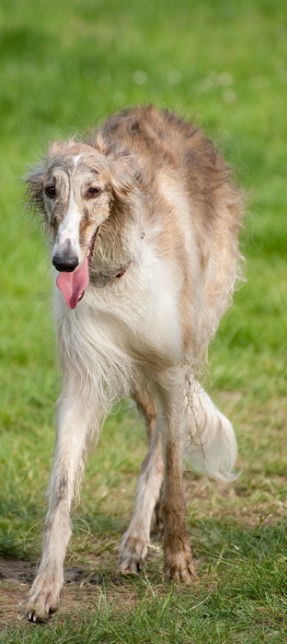

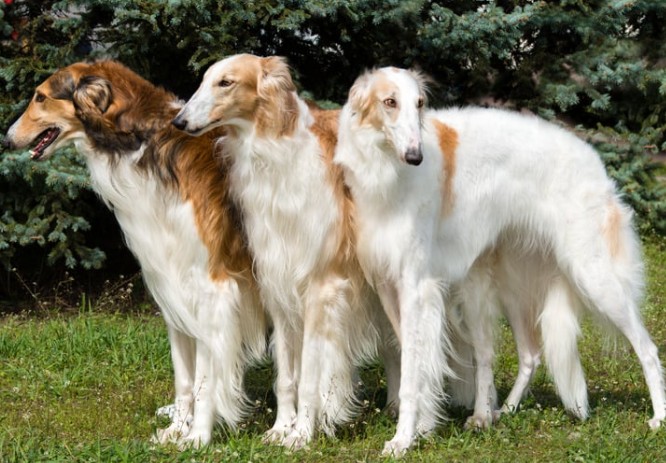
Intelligence with instinct. Independent problem-solvers, Borzois combine cleverness with a powerful prey drive. Their sensitivity demands gentle handling, turning trust and respect into the foundation of training.
Lifestyle & Environment
Exercise: Balancing Speed and Serenity
Adult Borzois present a fascinating exercise paradox – they’re capable of incredible athletic feats yet spend most of their time as devoted couch potatoes. These dogs need at least one to two hours of exercise daily, but this should be divided into walks with periods of play and training rather than sustained activity. The absolute best exercise remains 30 minutes or more of free running in a securely fenced area where they can truly stretch out and reach those impressive speeds.
Exercise considerations across life stages:
- Puppies: Need extensive free play for proper development but must self-regulate activity levels – forced exercise damages developing growth plates
- Adults: Generally increase their couch time with age but still need regular sprint opportunities to maintain physical and mental health
- Seniors: Require reduced intensity but should maintain regular gentle exercise for joint health and mental stimulation
Interestingly, brain games often tire them out faster than physical exercise, though both remain essential. Most Borzois develop excellent “on/off” switches – when they’re “off,” they’ll happily sleep up to 18 hours daily, making them surprisingly adaptable to various lifestyle patterns.
Creating the Perfect Home Environment
Despite their considerable size, adult Borzois often thrive in apartment living. These spatially aware dogs tend to curl up efficiently in chosen spots, sleeping extensively throughout the day. However, their size means they need adequate space to move comfortably, and regular access to secure running areas remains crucial for their wellbeing.
Essential home environment features:
- Secure, high fencing at least 6 feet tall (underground fences are completely inadequate)
- Protected spaces for their furniture lounging habits (they will claim your couch!)
- Appropriate crate for training and security – ideal size is 26″W x 36″H x 48″L
- Child-safe zones considering their size and sensitivity to rough handling
- Adequate indoor space for comfortable movement and stretching
Your Borzoi will quickly establish favorite resting spots throughout your home, often choosing elevated surfaces like beds and sofas where they can survey their domain while remaining supremely comfortable.
Climate Considerations for Your Russian Beauty
True to their geographic origins, Borzois genuinely enjoy cold weather and snow. Their remarkable double coat provides excellent cold weather protection, with that soft undercoat thickening during winter months or in cold climates. However, this same coat sheds appropriately in hot weather to help prevent overheating – nature’s own climate control system!
Managing your Borzoi through the seasons:
- They excel in cold climates with natural coat insulation
- Show sensitivity to heat requiring shade and constant water access
- Morning and evening exercise proves preferable during hot weather
- Indoor climate control becomes important for summer comfort
- Seasonal coat changes dramatically affect grooming needs
Remember, while they tolerate cold beautifully, they’re still house dogs who belong indoors with their families, not relegated to outdoor kennels regardless of weather conditions.
Family Integration and Social Dynamics
When raised with children, most Borzois become wonderful companions, though they’re simply not tolerant of rough treatment. Their large size creates valid concerns around young children who could be accidentally knocked over by an enthusiastic tail wag or playful bounce. Due to their strong prey drive, it’s critically important to supervise them around small animals like cats, rabbits, or guinea pigs, as they may instinctively give chase.
Understanding Borzoi social preferences:
- Most get along famously with other sighthounds, especially other Borzois
- Show variable tolerance for rough play from other dog breeds
- Many live harmoniously with cats if raised together (though outdoor cats rarely remain safe)
- Require carefully supervised interactions with small pets
- Form incredibly deep bonds with family members
The key to successful family integration lies in teaching children how to interact respectfully with your Borzoi while simultaneously socializing your dog to accept normal family chaos without stress.
Senior Care Considerations
Adapting to the Aging Aristocrat
As your Borzoi enters their senior years (typically around age 7-8), you’ll notice gradual changes requiring thoughtful adjustments to their care routine. While they may become even more devoted to their couch time, maintaining appropriate activity levels remains crucial for joint health and mental wellbeing. Senior Borzois often develop a distinguished dignity that makes them even more endearing to their families.
Physical changes might include decreased stamina during walks, longer recovery times after exercise, and increased stiffness, particularly in cold weather. You might notice they take longer to rise from rest or show reluctance to jump onto previously accessible furniture. These changes call for environmental modifications like ramps or steps to favorite resting spots and potentially softer bedding to cushion aging joints.
Nutritional adjustments for senior Borzois:
- May require fewer calories as activity decreases
- Need maintained or increased high-quality protein to prevent muscle loss
- Benefit from anti-inflammatory nutrients like omega-3 fatty acids
- Often need increased fiber for digestive health
- May require joint support supplements if not already provided
Health Monitoring in Golden Years
Senior Borzois require more frequent veterinary monitoring to catch age-related issues early. Beyond routine examinations, specific attention should focus on cardiac health (given breed predispositions), joint function, dental health, and cognitive changes. Some seniors develop canine cognitive dysfunction, showing confusion, altered sleep patterns, or changes in social behavior that benefit from early intervention.
Regular blood work becomes increasingly important to monitor organ function, particularly kidney and liver values that may change with age. Your veterinarian might recommend bi-annual examinations rather than annual visits, allowing for earlier detection and management of developing conditions.
Training for Special Activities
Discovering Lure Coursing Joy
Lure coursing was created specifically to allow sighthounds like your Borzoi to compete in simulated hunting situations safely. Courses consist of zigzag paths of at least 500-600 yards with mechanical lures that trigger that ancient chase instinct. Watching your Borzoi engage in lure coursing reveals their true nature – the explosive speed, the focused intensity, and the sheer joy of running.
However, introduce lure coursing carefully, especially with young dogs whose growth plates haven’t fully closed. Start with short runs and CAT (Coursing Ability Test) events before moving to competitive coursing. Some Borzois become so enthusiastic they learn to “cheat” by cutting corners or anticipating the lure’s path – showing that problem-solving intelligence in action!
Beyond the Chase: Other Activities
While lure coursing might seem the obvious choice, Borzois can excel in surprising activities:
Agility: Despite their size, many Borzois enjoy agility work when approached as play rather than strict obedience Therapy work: Borzois with appropriate temperaments make wonderful therapy dogs, bringing calm comfort to hospitals and care facilities Tracking and scent work: Despite being sighthounds, some discover unexpected talent for nose work Conformation showing: Their elegant movement and noble bearing make them natural show dogs Rally and obedience: With patience and positive methods, some Borzois even enjoy formal obedience work
Success in any specialized activity requires finding what motivates your individual dog and making training enjoyable rather than repetitive drilling.
Making the Decision: Is a Borzoi Right for You?
The Ideal Borzoi Owner Profile
The perfect Borzoi owner possesses specific characteristics that align with this breed’s unique needs. You’ll need patience for their independent thinking, understanding that they’re partners rather than servants. Your leadership style should be calm and consistent, using positive motivation rather than force or intimidation.
Essential qualities for Borzoi success:
- Commitment to providing secure exercise areas (no exceptions!)
- Acceptance of moderate to heavy seasonal shedding
- Financial resources for large dog care including potential health issues
- Time for companionship (they don’t thrive with long alone periods)
- Sense of humor about their independent nature
- Realistic expectations about recall reliability
Your lifestyle should accommodate both their need for intense activity and their love of extensive rest. You must provide secure running opportunities while accepting limited off-leash reliability will likely always be reality. Most importantly, you should value their unique blend of independence and deep family devotion.
The Rewards of Borzoi Companionship
Living with a Borzoi means sharing your life with a dog of remarkable contrasts. They’re athletes who adore lounging, independent thinkers who form deep bonds, and dignified aristocrats who occasionally reveal delightful silliness. Their presence brings elegance to your home and a unique perspective on the human-canine relationship.
Your Borzoi won’t be the dog frantically fetching balls or performing endless tricks for treats. Instead, they’ll be the companion who quietly leans against you during difficult times, who makes you laugh with unexpected playfulness, and who reminds you daily that some of life’s best relationships involve mutual respect rather than blind obedience.
Conclusion: Embracing the Aristocrat
The Borzoi represents one of dogdom’s most fascinating paradoxes – a breed simultaneously ancient and modern, independent yet devoted, athletic yet leisurely. They carry centuries of Russian history in their genes while adapting remarkably well to contemporary life. Understanding and accepting their unique characteristics opens the door to an extraordinarily rewarding relationship.
If you’re seeking a dog who will challenge your training skills while rewarding your patience, who will turn heads with their elegance while making you laugh with their humor, and who will teach you that the best relationships involve mutual respect rather than dominance, then the Borzoi might be your perfect match. These remarkable dogs don’t just become pets – they become family members who leave pawprints on your heart that last a lifetime.
Remember, bringing a Borzoi into your life means accepting them as they are – independent thinkers shaped by centuries of selective breeding, sensitive souls who thrive on gentle guidance, and athletes who need secure spaces to run. If you can provide these things while appreciating their unique perspective on life, you’ll discover why Borzoi owners often describe their dogs as addictive – once you’ve been owned by one, no other breed quite compares 🐾
The journey with a Borzoi isn’t always easy, but for those who understand and embrace their nature, it’s incredibly rewarding. These aristocratic athletes bring grace, dignity, and unexpected joy to the lives they touch, proving that sometimes the best companions are those who maintain a bit of mystery while offering unwavering devotion.

